F-150 Coyote vs EcoBoost: Which Is Better?
Last Updated: April 3, 2020
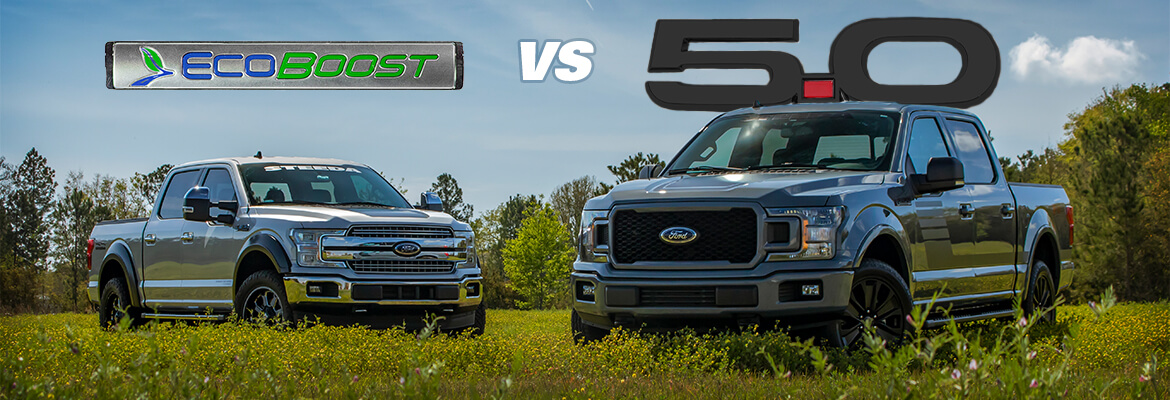
Back in 2011, Ford unveiled two revolutionary engine platforms for the F150 in engine design,
performance, and capability. Since the 3.5L EcoBoost V6 and 5.0L Coyote V8 have been duking it out for
bragging rights, it's a natural comparison to see which engine is best suited for America's favorite
truck.
At first, the EcoBoost platform was very hard to accept for F-150 enthusiasts because for decades the
formula for engine power in a truck has been an all-American V8 under the hood. So, when a twin-turbo V6
was introduced, customers were pretty nervous to give it a good look because of the proven reliability
and power that an American V8 provides for duties such as towing, hauling, and off-roading. To this day,
there is still a debate on what engine is the best. Steeda is here to inform you which engine
platform is best suited for you!
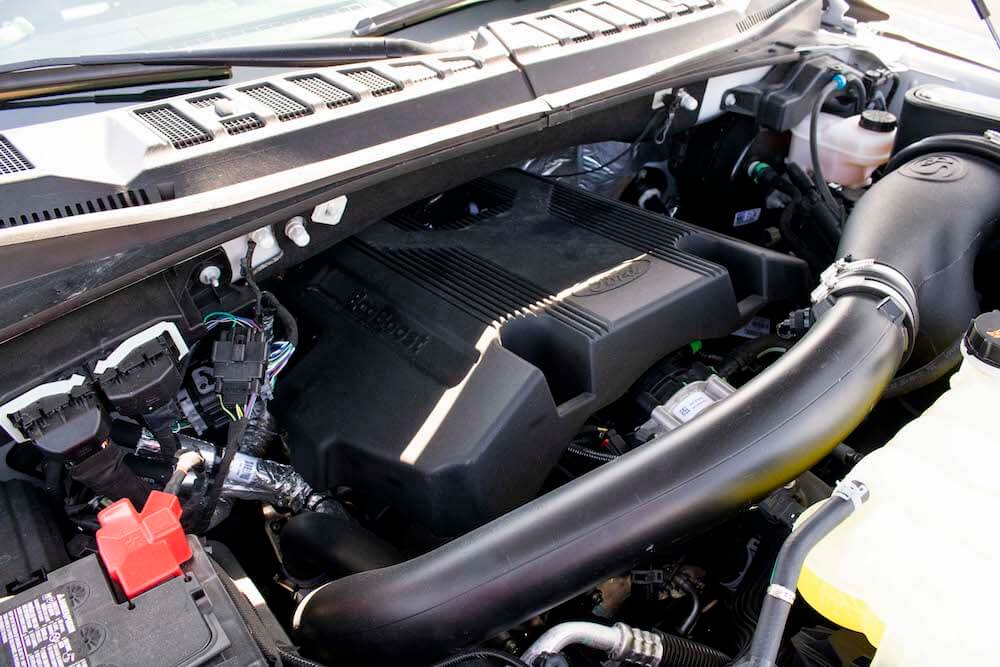
What Is An EcoBoost Engine?
In the F-150, the 3.5L EcoBoost engine is quite simply the power of a V8 with the fuel efficiency of a
V6.
For many decades, the formula for an American pickup has been the tried and true V8. Since the 1950s,
Americans have enjoyed the sound and power a great thumping V8 under the hood to get the job done. But
over the last 20 years, F-150 customers were asking for greater fuel economy, efficiency, and power in
their trucks.
Ford answered the call to this growing demand when they unveiled the 3.5L EcoBoost
V-6. This engine was an absolute milestone, something which the likes of F-150 customers and
enthusiasts have never seen before. The first generation F150 EcoBoost came equipped with
twin-turbos from the
factory, supplied from Borg-Warner. It was equipped with Ti-VCT (Twin Independent Variable
Camshaft Timing), 365 horsepower at 5,000 RPM and 420 LB/FT of
Torque at 2,500 RPM. The EcoBoost delivered on the promise of greater power and effciency.
Customers started to take notice of this quickly.
By enabling people to get the fuel efficiency of a V6 and get the power of an 8-cylinder engine,
it started a turnover
effect that has never been seen in the truck market.
Once people realized how incredible this engine platform was, customers started to lineup at
Ford dealers across the nation.
Ford really knew that they developed a gold mine in engine technology and performance. This
enabled the EcoBoost 3.5L to
punch over its weight class among the F-150 engine lineup as well as its competitors.
EcoBoost 3.5L Specs
| EcoBoost 3.5L V6 |
Horsepower |
Torque |
Towing Capacity |
| Gen 1 2011-2016 |
365 HP @ 5,000 RPM |
420 LB/FT of Torque @ 2,500 RPM |
12,200 Pounds |
| Gen 2 2017-2020 |
375 HP @ 5,000 RPM |
470 LB/FT of Torque @ 2,500 RPM |
13,200 Pounds |
Gen 2 High Output
2017-2020 Raptor & Limited Models
Only |
450 HP @ 5000 RPM |
510 LB/FT of Torque @ 3,500 RPM |
8,000 Pounds |
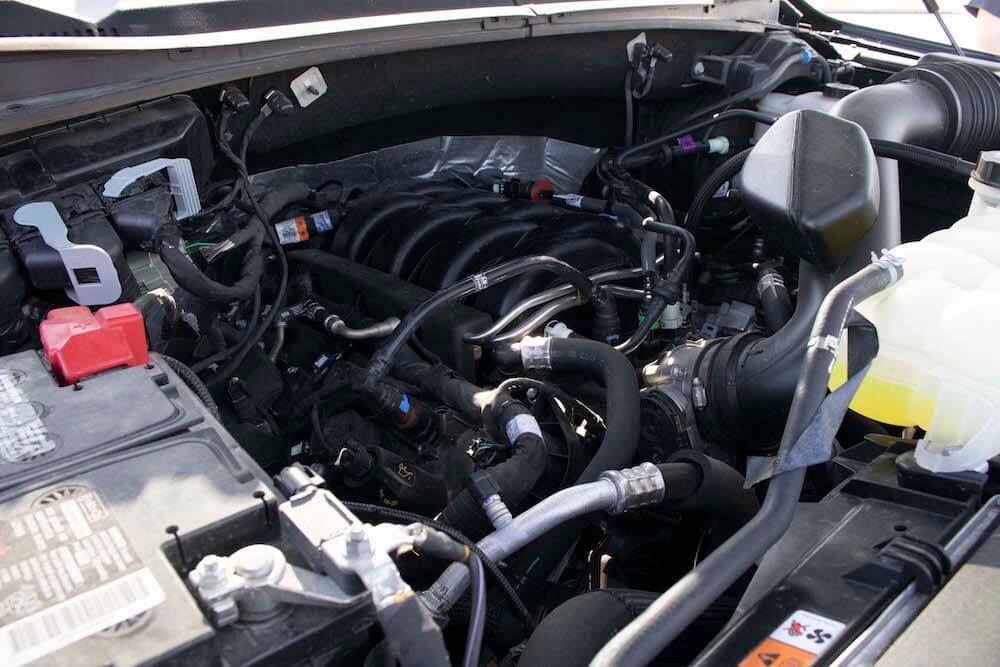
Rebirth Of A Legend
Since the birth of the Ford flathead in the early 1930s, V-8 enthusiasts have been obsessed with
the raw power, torque, and sound of an American V8. For years, Ford enthusiasts raved about the
raw power and thrill they would experience from legendary V8s such as the Boss 429, Boss 302,
428 Cobra Jet
and Foxbody 5.0.
During the Foxbody Mustang era, the Ford 5.0L Pushrod V8 debuted. From the start, it became a
success overnight due to its low-end torque, ease of modification, and high horsepower capability. Due
to this success, F150 engineers took notice of the engine’s capability to deliver huge amounts
of torque at low RPMs. This was a perfect setup for truck applications for off-roading, towing,
and hauling payload. All the way up until 1995, Ford was pumping out these amazing V8s into every
F-150 and Mustang they could build. Until 1996, when Ford replaced both engine platforms with the
overhead cam 4.6L V8 modular engine.
It wasn’t till 15 years later that the 5.0L made a glorious return. Code-named “Coyote,” it was
both launched into the F150 and the Mustang at the same time in 2011. Ford enthusiasts couldn’t
wait to get on their hands on the new American legend! Little did it know the Coyote would have
to square up against a sibling rivalry in the EcoBoost 3.5L V6. The first generation of the
Coyote
in the F-150 was a huge leap forward into V8 truck engine technology.
For the first time in Ford’s history, a V8 would come equipped standard with Ti-VCT technology. This
enables the engine to
breathe much more efficiently and bring in more air to the engine which results in more efficiency,
horsepower and torque. This technology allows for performance at any RPM, roller
finger followers for razor-sharp valve action, and a deep breathing cylinder head with four
valves per cylinder. To aid in burning all that oxygen and fuel is a coil-on-plug design for efficient
combustion. Lastly, piston cooling jets were adding to keep performance high
and engine life long.
5.0L Coyote Specs
| Ford Coyote 5.0L 32V
TI-CVT V8 |
Horsepower |
Torque |
Towing Capacity |
| Gen 1 2011-2014 |
360 HP @ 5,500 RPM |
380 HP @ 4,250 RPM |
11,300 Pounds |
| Gen 2 2015-2017 |
385 HP @ 5,750 RPM |
387 LB/FT of Torque @ 3,850 |
11,200 Pounds |
| Gen 3 2018-2020 |
395 HP @ 5,750 RPM |
400 LB/FT of Torque @ 4,500 RPM |
11,500 Pounds |
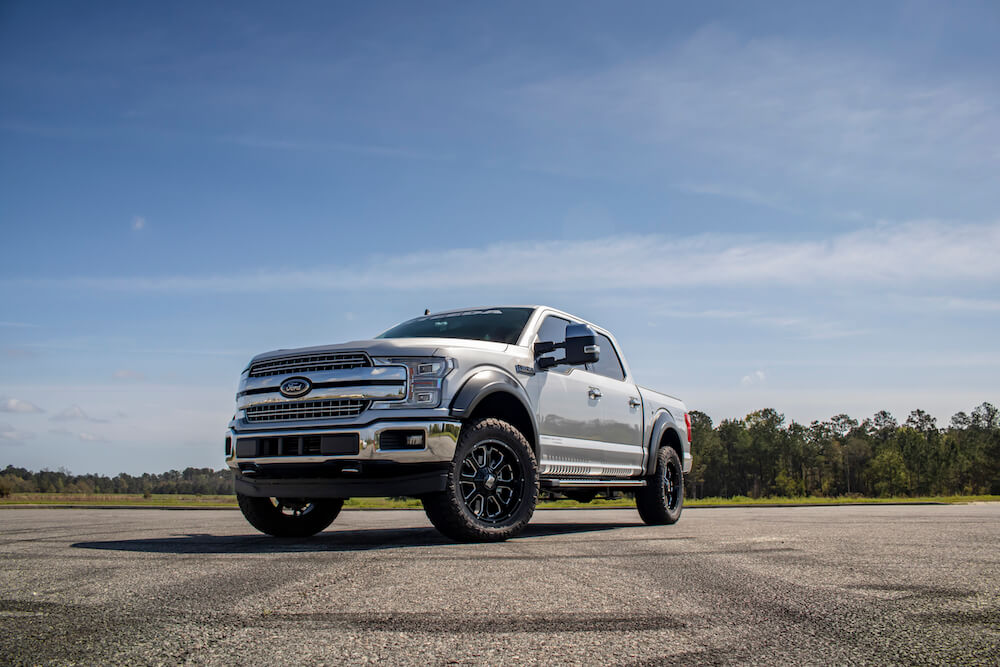
F-150 EcoBoost Pros & Cons
For years, the truck segment has been changing drastically in order to be lighter, stronger, and
more efficient in all key areas. If you ask a purist F-150 enthusiast, they will tell you that
there is no replacement for displacement. Ford said otherwise when they introduced the engine
platform.
Pros
- Like a V8, the EcoBoost creates the same amount of power in a much more
efficient way, while giving you the best fuel economy in a half-ton pickup. For individuals
who purchase an F-150 for work, the job site, or towing. The capability is unsurpassed
against the Coyote due to the initial low-end torque at only 2,500 RPM.
- This allows the user to get out of the hole from a stop much more
efficiently. In turn, there will be less strain and wear on vital driveline components when
towing an excess of 10,000 pounds or more.
Cons
- The downfall to an EcoBoost is that it has to rely upon forced induction to
create power.
- In the long term, these extra components can wear over time. Causing more
maintenance for owners down the road.
- For purists, the raw sound and thrill of a V8 will not be there any longer.
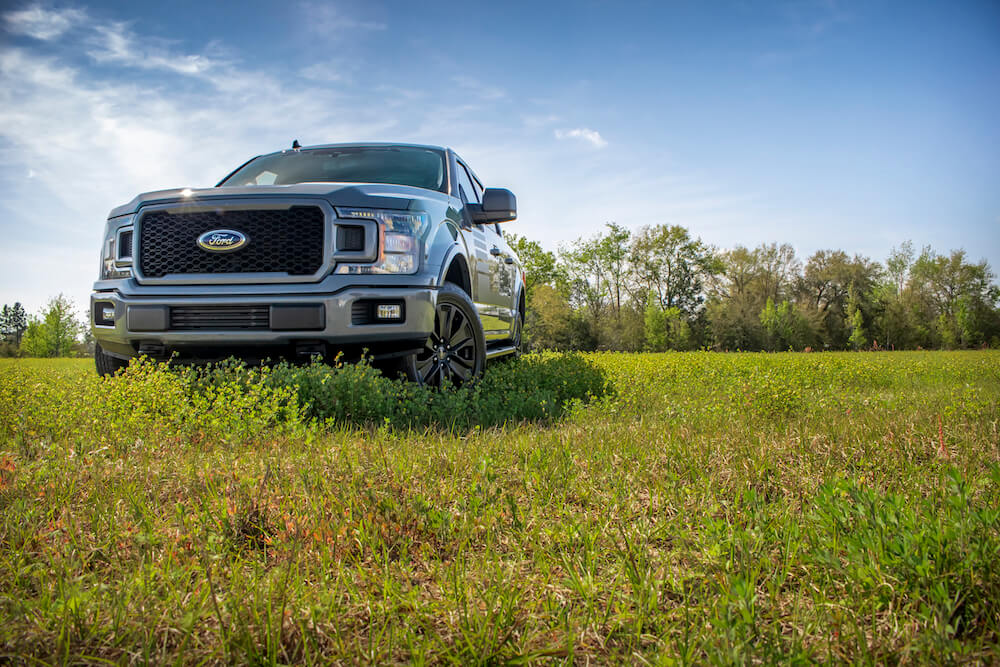
F-150 Coyote Pros & Cons
Americans everywhere have been accustomed to a big torquey V8 underneath their Ford truck since
the early 1950s. As trucks evolved, so did the V8 along with it. Over the years, V8s have had
their fair share of triumphs and downfalls the Coyote is no different to this.
Pros
- Unlike the EcoBoost, the Coyote uses all American muscle and modern engine
technology to deliver its power and torque in a naturally aspirated capacity.
- This allows the owner to worry less about extra components malfunctioning over
a long period of time.
- The raw experience and power that is synonymous with an American V8.
Cons
- Tuneability can be an issue to a certain degree when it comes to Coyotes
depending on what you plan to do in your F150.
- From the factory, the 5.0L Coyote creates a significant amount of less torque than
the EcoBoost does, therefore it cannot tow or haul as much.
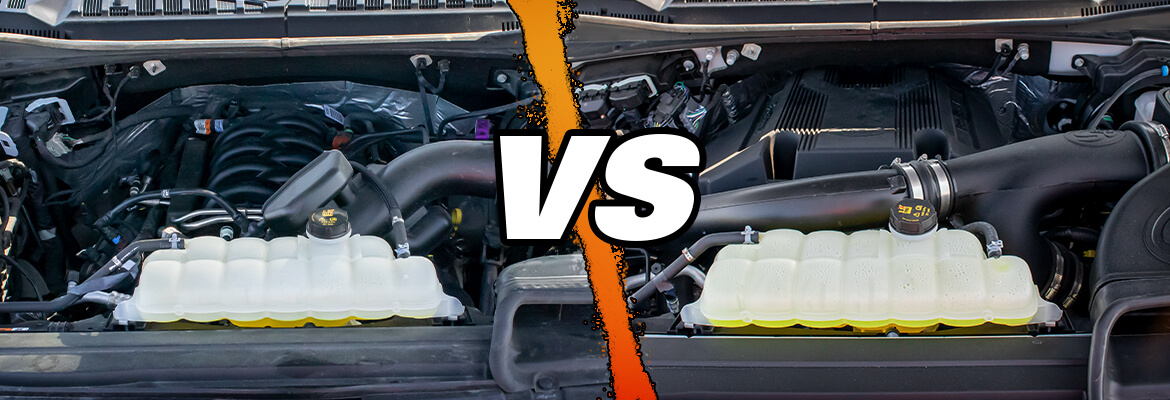
Choosing Between a Coyote & EcoBoost
Choosing your options on your F-150 can be a daunting task. With the number of options, engine
choices, and models you could be second-guessing yourself for some time. When it comes to the
perfect engine option, you have to really ask yourself what the intended use for the truck is
going to be.
Here are some variables that you should look at before you decide:
- Primary Usage: Are you planning to have it as a daily driver, overland vehicle,
construction
site work truck, or tow rig? This is the first key decision before choosing either engine
platform.
- Capability: A lot of truck owners will buy a certain model and engine choice in the
F-150
due to the amount of towing, payload, and capacity it can handle.
- Fuel Economy: As Ford F150 engines have evolved, they have been able to achieve
greater fuel
efficiency. Which is a major factor in the decision process in choosing either engine.
Individuals who tow a lot will choose to purchase the EcoBoost platform due to the greater
torque and fuel efficiency.
- Fun Factor: This will boil down to who is the purist and who isn’t. The enthusiast
who
wants to have all the capability of an F-150 but still has the raw power and sound will most
likely choose the Coyote. On the other hand, the EcoBoost is going to provide the best of
all worlds in terms of power, capability, and efficiency.
After you have processed all this information, you'll have all the knowledge you need to an
informed decision to purchase your next F-150 and choose the correct engine option. Everyone at
Steeda loves both engine platforms for there capability, modification potential, and
performance. No matter what you end deciding, each are proven platforms that have only helped the
F-150s continue its legendary legacy in the world of American truck performance!
Related Articles










